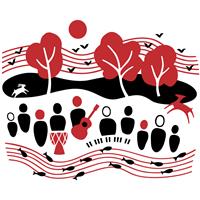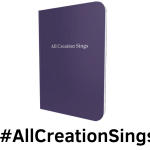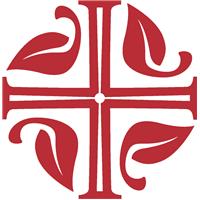As you observe All Saints Sunday on November 7, 2021 or at another time near November 1 (All Saints Day), you may desire a rite that acknowledges those who have died from COVID-19 during this past year or since the beginning of this pandemic.
Of course, we lament many other deaths and losses due to systemic injustice, racism, climate change, poverty, and more. Even as we put our hope and trust in God, including times of lament in our worship allows us to join the pleading of all creation. “We know that the whole creation has been groaning in labor pains until now; and not only the creation, but we ourselves…” (Romans 8:22-23)
The following litany of lament may be part of the gathering rite or part of the intercessory prayer. Other resources for lament can be found in All Creation Sings (pp. 61-66). Hymns and songs with a lament theme can be found in Evangelical Lutheran Worship (#697-704) and All Creation Sings (1049-1055). See especially “God weeps with us who weep and mourn” (ACS 1054) for its resonance with the gospel reading for All Saints. Musical resources for choir and assembly can be found in Music Sourcebook: All Saints through Transfiguration, with most of the contents available to subscribers on Prelude Music Planner. Additional intercession resources crafted in response to the pandemic are available from the Lutheran World Federation. Additional lament resources can be found in Pray, Praise, and Give Thanks: A collection of Litanies, Laments, and Thanksgivings at Font and Table by Gail Ramshaw.
Litany of Lament for All Saints in a Time of Pandemic
The shroud of death covers us. 700,000 and more have died in our nation from the COVID-19 pandemic. Four and a half million and more have died worldwide.
Have mercy, O God.
Sickness fills our homes and hospitals. Health care workers are weary and exhausted as suffering and death has come so near to them.
Have mercy, O God.
Families and friends grieve. With Mary we cry out, “Lord, if you had been here.” Over 100,000 children in the United States cry out for parents, grandparents, or caregivers who have died from this pandemic.
Have mercy, O God.
Ways of life are forever changed. The shadow of this disease spreads over the living. Relationships are strained or broken. Depression, anxiety, fear, and grief have become constant companions.
Have mercy, O God.
Families and neighbors, leaders and officials, mistrust one other. Anger rages. Systems break down. Doors are closed to understanding and mutual care.
Have mercy, O God.
Receive O God, the laments of our own hearts…
A generous time of silence is kept.
Lift up your heads and hear these words of promise:
The Creator of all brings life from the ashes.
The Redeemer of the world wipes away our tears.
The Spirit of life fills us with strength for the days to come.
Even as we grieve, we do not grieve as those without hope. We trust that all your saints dwell with you forever. And so we are bold to acclaim:
Thanks be to God.
Thanks be to God.
Petition for the prayers of intercession
God our hope, we remember all who have died and now rest in you. We remember especially all who have lost their loves to COVID-19 (especially. A time of silence or ringing of bells could be observed). Comfort all who mourn and give us your strength until that day when crying and pain are no more. Hear us, O God.
Your mercy is great.
Practical guidance specific to COVID-19 safety, “2021 Guidance for All Saints and Related Observances,” is available from the Ecumenical Protocols for Worship, Fellowship, and Sacramental Practices consultation.
 All Creation Sings, the worship and song supplement to Evangelical Lutheran Worship, released in late November 2020. The church was entering Advent at the height of the COVID-19 pandemic; vaccines were not yet available. Most of our assemblies were worshiping online.
All Creation Sings, the worship and song supplement to Evangelical Lutheran Worship, released in late November 2020. The church was entering Advent at the height of the COVID-19 pandemic; vaccines were not yet available. Most of our assemblies were worshiping online.





